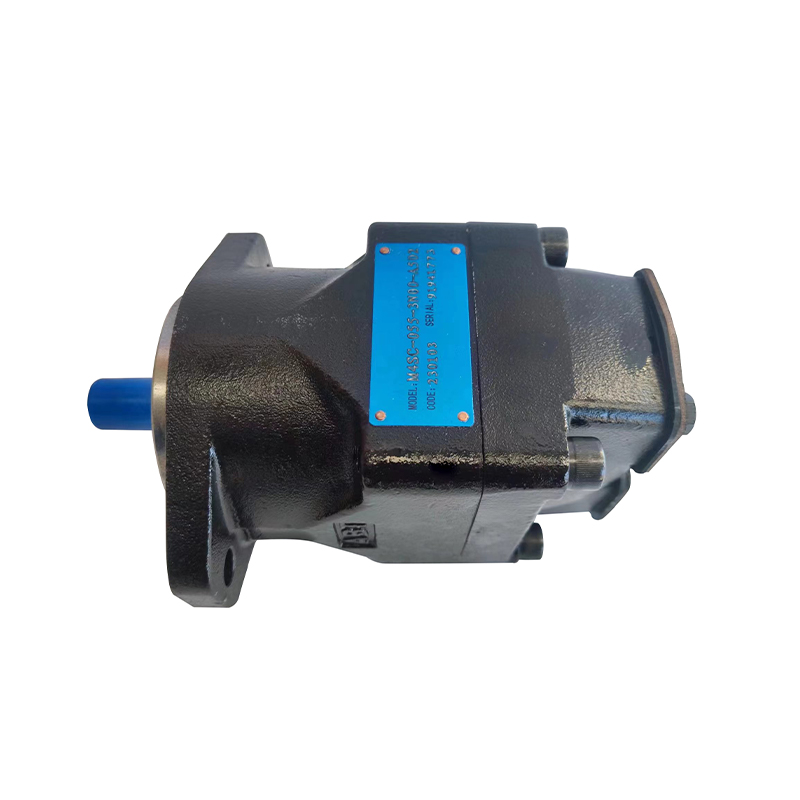The performance of vane motors in extreme temperature and pressure environments is an important consideration for their reliability and performance. They are often used in harsh working environments such as high temperature, high pressure or low temperature, so their design must fully consider these environmental factors. The following is a detailed analysis of the performance of vane motors in these environments:
Performance in high temperature environments
In high temperature environments, vane motors face challenges such as lubricant degradation, material expansion and heat resistance. High temperature may cause the viscosity of the lubricant to decrease, which will affect the lubrication effect of the motor and increase friction and wear. In addition, high temperature will cause metal parts to expand, which may cause structural deformation and affect the operating accuracy and efficiency of the motor.
Countermeasures:
High temperature resistant materials: Use high temperature resistant sealing materials, bearings and blades to ensure that the motor can withstand high temperature environments. For example, use heat-resistant alloy materials, ceramic coatings, etc.
High temperature lubricant: Use high temperature stable lubricant, or design a system that can automatically adjust the lubricant temperature to avoid performance degradation due to excessive lubricant temperature.
Heat dissipation design: Enhance the heat dissipation system design of the vane motor, such as adding heat sinks, air cooling systems, etc., to effectively reduce the temperature.
Performance under high pressure
Under high pressure, the sealing and strength of the vane motor are important considerations. High pressure may cause seal failure, damage or leakage of structural components, affecting the working efficiency and safety of the motor. In addition, as the pressure increases, the flow characteristics of the working medium also change, which may affect the output power and operating stability of the motor.
Countermeasures:
High-pressure seal design: Use multiple sealing systems and high-pressure resistant materials to ensure that no leakage occurs under high pressure. Common sealing materials include polyurethane (PU) and fluororubber (FKM), which have excellent high-pressure resistance.

Strengthen structural strength: Key components such as motor housings, bearings and blades need to use high-strength alloys or composite materials to cope with the stress caused by high pressure.
Fluid control system: Design a precise fluid control system to ensure that the flow of liquid or gas under high pressure can smoothly transmit power, thereby avoiding performance fluctuations caused by pressure fluctuations.
Performance under low temperature
In low temperature environments, the main challenges faced by vane motors are reduced fluidity of lubricants, embrittlement of materials, and expansion or contraction of parts. Low temperature may cause the viscosity of lubricants to increase, affecting the lubrication effect, and even causing the lubricants to solidify or freeze. In addition, low temperatures may also increase the brittleness of the motor's metal parts, making them prone to breakage or damage.
Countermeasures:
Low-temperature lubricants: Select lubricants with good low-temperature fluidity, or design a lubrication system with self-heating function to ensure that the lubricant can maintain fluidity and good lubrication even at low temperatures.
Low-temperature resistant materials: Use materials that are resistant to low-temperature embrittlement (such as low-temperature alloys, stainless steel, etc.) to ensure that motor parts will not become brittle, break or deform due to low temperatures.
Heating system: In extremely low-temperature environments, it is possible to consider adding a heating system (such as electric heating belts, warm air systems, etc.) to the vane motor to ensure that the motor can start and operate normally.
Performance under the combined effects of temperature and pressure
Under certain special working conditions, the vane motor may face high temperature and high pressure environments at the same time, or high temperature and low temperature may change alternately. In this case, the design of the vane motor must take into account the effects of both to ensure that it can work stably in complex environments.
Countermeasures:
Multifunctional material selection: Select multifunctional materials that can withstand both high temperatures and high pressure or low temperatures, such as titanium alloys, high-temperature and pressure-resistant synthetic materials, etc., to ensure that the motor can provide reliable performance in different extreme environments.
Environmental adaptability test: During the design and production stage, strict high-temperature and high-pressure or high-temperature and low-temperature environmental tests are carried out to ensure that the vane motor can operate stably in the actual working environment.
Comprehensive optimization design
In summary, the performance of the vane motor in high-temperature, high-pressure or low-temperature environments mainly depends on reasonable design and high-quality material selection. During the design process, multiple factors such as pressure, temperature, and fluid properties must be comprehensively considered and carefully optimized. Through a series of measures such as high-temperature resistant materials, strengthening of the sealing system, improvement of the lubrication system, and heat dissipation design, it can be ensured that the vane motor can still operate stably and efficiently in extreme environments.
The performance of the vane motor in extreme environments such as high temperature, high pressure or low temperature depends on many aspects of technology and design optimization. By selecting appropriate materials, lubrication systems, sealing technologies, and heating and heat dissipation solutions, the vane motor can provide reliable power output in various extreme environments. Therefore, when designing and using vane motors, detailed evaluation and customization should be carried out according to the working conditions of the specific application to ensure that it can still operate efficiently and stably in harsh environments.

 English
English русский
русский Español
Español عربى
عربى

